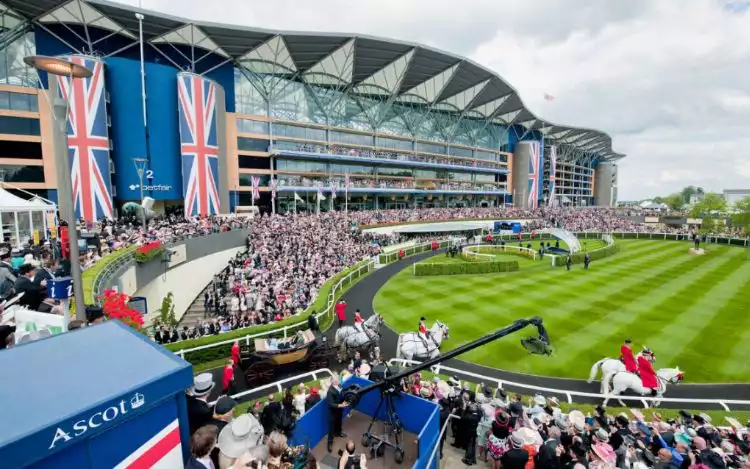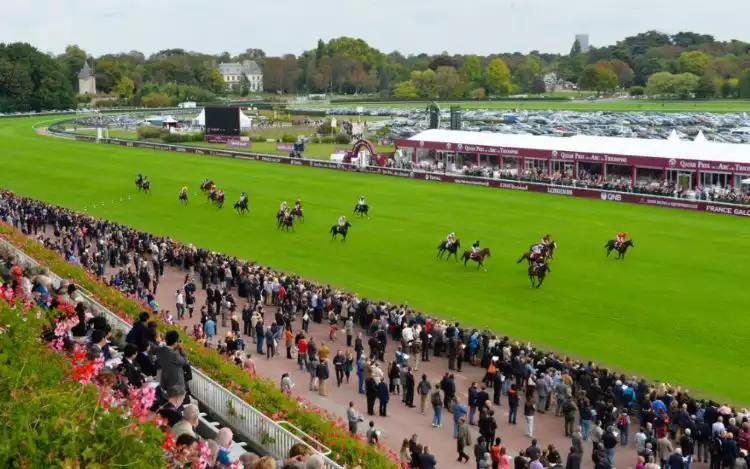Flat Horse Racing Guide
Flat horse racing is a unique and captivating sport in its own right. It takes place on level tracks, creating a pure test of speed, agility, and strategy. Elite thoroughbreds compete over relatively short distances, making it a thrilling spectacle. In this guide we cover all angles of flat horse racing, equipping you with the knowledge and insights needed to appreciate and potentially profit from this exciting sport.
What is Flat Racing and How Does it Work?
Unlike other forms of horse racing, such as National Hunt, there are no jumps or obstacles involved in flat racing. Instead, it takes place on flat tracks, typically ranging from 5 to 12 furlongs (around 5/8 to 1.5 miles) in distance. The core objective of flat racing is straightforward: horses compete to be the first across the finish line. The horses are carefully trained and bred for this specific purpose, resulting in a breed known as the Thoroughbred.
Flat racing events are categorised into various distances, and each race may have unique conditions, including age restrictions, gender restrictions, and handicaps. The jockeys play a crucial role in flat racing too, as they must guide the horses to maintain optimal speed and positioning throughout the race. Strategy, timing, and a deep understanding of the horse's capabilities are vital for success.
Best Sites for Flat Race Betting Online
10bet
100% up to €50
Sports Welcome offer
Betway
Get up to €50 in Free Bets
If your first bet loses
+ 50 Bonus Spins
Flat Race Classification
Group Races: The pinnacle of flat racing, Group races are divided into Group 1, 2, and 3, with Group 1 being the most prestigious. These events feature top-calibre horses and are the focus of worldwide attention generating millions in horse racing betting.
Listed Races: Just below Group races in prestige, Listed races offer an excellent platform for talented horses to showcase their abilities. They often serve as stepping stones to higher levels of competition.
Handicap Races: Handicap races level the playing field by adjusting weights, making them challenging and thrilling. They frequently attract competitive fields and are known for their unpredictable outcomes.
Conditions Races: These races have specific criteria, such as age, sex, or weight, creating specialised competitions that cater to particular types of horses and enhance the overall racing experience.
Maiden Races: Intended for horses that have not yet won a race, maiden races provide a valuable opportunity for inexperienced horses to gain experience and confidence on the racetrack.
Novice Races: Novice races are tailored for horses and jockeys who are in the early stages of their careers, providing a learning ground to develop essential racing skills.
Apprentice Races: These races allow apprentice jockeys to gain valuable experience and showcase their talents as they pursue professional racing careers.
Claiming Races: In claiming races, every horse is available for purchase, blending competition with commerce in a unique and intriguing way for both owners and bettors.
Notable Flat Race Tournaments
Flat racing boasts several prestigious tournaments that capture the essence of the sport. Among them, the Epsom Derby, Royal Ascot, and Prix de l’Arc de Triomphe stand out as highlights.
Epsom Derby
The Epsom Derby, often referred to simply as "The Derby," is a jewel in the British racing crown. Established in 1780, it has grown into one of the world's most iconic flat racing events. Set over a gruelling 1.5-mile course, this race challenges three-year-old thoroughbreds for the much sought-after title.
Royal Ascot Festival
The Royal Ascot Festival is renowned for its regal pomp, fashion, and world-class racing. Spanning five glorious days, this event attracts attention from all corners of the globe. The festival's rich traditions and a palpable sense of occasion create an atmosphere like no other, where royal patronage, high fashion, and the very best in horse racing converge. Knowing how to bet in horse racing at these types of festivals is crucial, given the sheer number of options.
Prix de l'Arc de Triomphe
The Prix de l'Arc de Triomphe is a legendary horse race held in the heart of Paris, France. Regarded as one of the most renowned turf events globally, it has been captivating audiences since its inception in 1920. This race tests the mettle of elite thoroughbreds from across the world. It is a true celebration of the sport's international allure and the enduring legacy of champion racehorses.
Common Terminology in Flat Racing
Break: The moment when horses burst from the starting stalls, launching the race. A horse missing the break gets off to a poor start, impacting their race.
Classic Races: There are five Classics: the 2000 Guineas, 1000 Guineas, Oaks, Derby, and St Leger, marking the pinnacle of the flat racing calendar.
Colt: A male horse under the age of five.
Foal: A horse from birth until the first of January the following year. Afterwards, they become yearlings, signifying a full year of age.
Filly: A female horse under the age of five.
Finish Line: The point at the end of the race where the winner is determined.
Furlong: A unit of distance in flat racing, equivalent to 220 yards or 201 meters.
Gates: The front section of the starting stalls that open to initiate a flat race.
Going: The track's condition, whether firm or soft, significantly impacts a horse's performance and race preparation. Horses often have preferences for specific going conditions, making it a key factor in strategy and betting.
Group Races: Races divided into Group 1, Group 2, and Group 3, with all Classic races belonging to Group 1. These are the upper echelon of contests.
Green: Horses described as "green" are typically inexperienced and exuberant.
Handicap: A race where horses carry different weights based on their ability, aiming to level the field and create a fair competition. This is decided by the handicapper.
Headquarters or HQ: Newmarket, often referred to as the headquarters of flat racing.
Jockey: The rider on the horse during a race.
Off the Pace: When a horse trails behind the race leaders, riding at a distance.
Paddock: The area where horses are saddled and prepared before a race.
Post Position: The starting gate number from which a horse begins the race.
Silks: The colourful clothing worn by jockeys that represent the owners of the horse.
Sprint Races: Short contests covering five to six furlongs, focusing on pure speed.
Stakes Race: A race where the prize money is contributed by the owners of the competing horses, often involving high stakes.
Staying Races: Races extending over two miles or more, testing a horse's endurance and stamina, often considered a true test of staying power in flat racing.
Turf: The natural grass track where flat races are held.Flat Racing Key Participants
Flat racing is not just about the horses; it is a stage where several key participants come together.
Owners: Owners are the financial backers and visionaries behind the racehorses. They invest in buying and maintaining horses, as well as shouldering the training and racing expenses.
Trainers: Trainers are the expert in horse racing strategy. They shape and condition horses for racing, overseeing their diet, exercise, and race preparation. These professionals are instrumental in a horse's success.
Jockeys: Jockeys are the daring pilots on the horse's back, guiding them through the race. Their skill and experience are pivotal in determining a race's outcome.
Breeders: Breeders focus on the lineage of racehorses. They select stallions and mares to produce promising foals with the desired attributes of speed and stamina.
Officials: Officials are responsible for ensuring that races are conducted fairly and safely. They enforce the rules and regulations of the sport.
Spectators and Bettors: Spectators and bettors are an integral part of the sport, injecting passion and excitement into every race. Their support fuels the industry and drives the betting market.
Flat racing thrives on the collaboration of these diverse participants, coming together to create a sport filled with history, strategy, and exhilaration.
Differences Between Flat Racing vs Jump Racing
Flat racing and jump racing are two distinct branches of horse racing, and you will likely need to adjust your horse racing bet type according to which branch you bet on. The key differences between the types of races are explored below.
Obstacles
Flat racing is a discipline where horses compete on a flat surface. In contrast, jump racing, or National Hunt racing, introduces obstacles in the form of hurdles and steeplechase fences that horses must navigate.
Race Duration
Flat racing primarily features shorter races, typically spanning from five furlongs (around 5/8 mile) to two miles. This emphasises speed and endurance. Jump racing, on the other hand, tends to involve longer races, often exceeding two miles and occasionally extending to marathon distances, placing greater importance on a horse's stamina.
Horse Age
Flat racing is predominantly for younger horses, with races designed for two to five-year-olds. Jump racing encompasses a broader age range, with horses starting their careers at three years old and often continuing to race into their teens.
Training
Flat race training focuses on speed, agility, and maintaining consistent speed. Jump race training includes teaching horses to navigate obstacles safely, requiring additional conditioning and specialised skills for both horse and jockey.
Race Season
Flat racing is more common during the warmer months, with a season that typically spans from spring to autumn. In contrast, jump racing is prevalent during the colder seasons, featuring a jump season that extends through autumn and winter.
Tack and Equipment
In flat racing, horses wear lightweight equipment, and jockeys use flat saddles that facilitate a lower and more aerodynamic position. Jump racing requires horses to wear heavier tack and heavier jumping saddles that provide additional stability and security when clearing obstacles.
Racecourses
Flat races take place on tracks with smooth surfaces and gentle turns, focusing on speed and positioning. In jump racing, races occur on more undulating tracks with bends, often featuring steeplechase fences and hurdles.
Flat Racing Final Thoughts
Flat racing is an exciting variation of horse racing commanding millions of pounds in prize money for participants. It is regarded as the most elegant form of racing and is enjoyed around the globe.
With races ranging from sprints to classic distances, it offers thrilling competition and betting opportunities. We would like to stress that you should only bet what you can afford, so please gamble responsibly.
Flat Racing FAQs
Here are the most common questions we get asked about Flat Racing.



